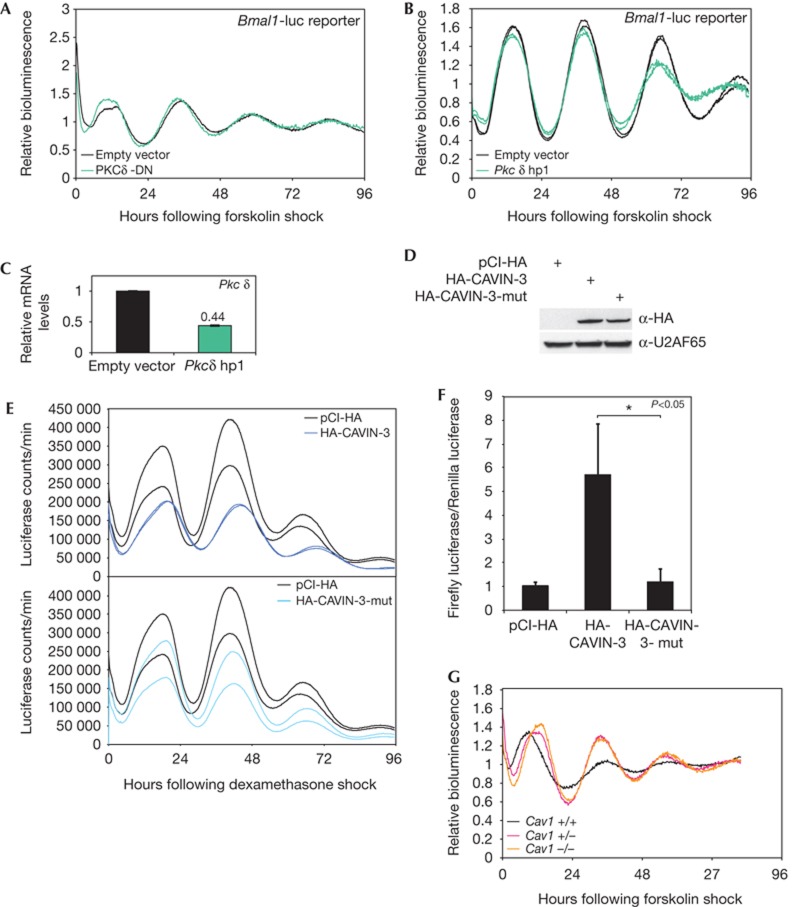Figure 4.
CAVIN-3 requires its PKC-binding site, but Pkcδ and Caveolin1 seem not to be involved in setting the circadian period length. (A) Bmal1-luciferase reporter rhythms in NIH3T3 cells expressing a dominant-negative PKCδ (PKCδ-DN, green) or the empty vector (black). Raw data were detrended using moving average transformation. (B) Bmal1-luciferase rhythms in cells co-transfected with a vector encoding a Pkcδ-specific shRNA (green) or an empty shRNA vector (black). Raw data were detrended using moving average transformation. (C) Pkcδ-knockdown efficiency measured by quantitative PCR. (D) Expression levels of HA-CAVIN-3 and HA-CAVIN-3-mut assessed by anti-HA immunoblotting. (E) Bmal1-luciferase reporter rhythms in dexamethasone-shocked NIH3T3 cells co-transfected with plasmids encoding HA-CAVIN-3 (dark blue), HA-CAVIN-3-mut (light blue) or the empty plasmid (black). Data from duplicate transfections are shown. (F) Dual luciferase assay quantifying the effect of HA-CAVIN-3 and HA-CAVIN-3-mut co-expression on the PER2:CRY2 interaction. The assay was performed as in Fig 3. Mean±s.d., n=3. (G) Bioluminescence recorded in Bmal1-luciferase lentivector-transduced primary fibroblasts prepared from wt (black), heterozygous (pink) and homozygous (orange) Caveolin1-knockout animals. Raw data were detrended using moving average transformation. CRY, Cryptochrome; HA, haemagglutinin; PER, Period; PKC, protein kinase C; PKCδ-DN, dominant-negative PKCδ variant; shRNA, short-hairpin RNA.

